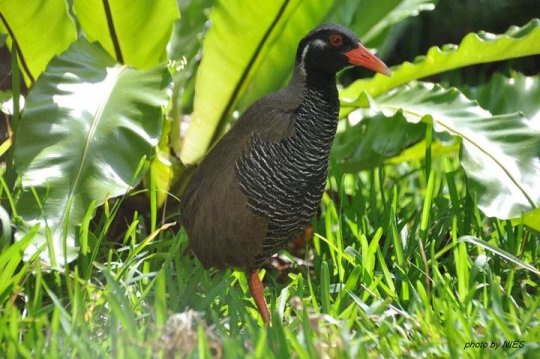[ad_1]
The number of critically endangered animals has been increasing in recent years. According to data from the International Union for the Conservation of Nature (IUCN), 1375 avian species are categorized as being endangered animals, and around 12% of the endangered species are avian. The conservation of endangered species is an important task for our next generation in order to maintain genetic diversity. The Okinawa rail, which is a species endemic to northern Okinawa Island, is an example of an endangered (EN) avian species. The Okinawa rail is categorized EN on the IUCN red list, because its individual numbers are estimated to be approximately 1500.
As part of the cellular conservation of endangered avian species, our group initiated a primary cell culture project aimed at preserving endangered avian species in Japan, such as the Okinawa rail. However, primary cells cannot be cultured indefinitely because of cellular senescence and stresses caused by cell culture. To overcome these cell culture limitations, primary cells have to be immortalized. Although immortalized cultured cells are useful for various functional assays or transcriptome analysis, highly efficient and reproducible immortalization methods have not been developed in avian-derived cells. We firstly introduced the simian Virus 40T antigen (SV40T) and human papillomavirus (HPV)-E6E7 to chick and Okinawa rail (endangered species) derived fibroblast. However, neither the SV40T nor E6E7 genes could induce avian cell immortality.
Accordingly, we attempted to use a recently developed immortalization method, which involves the co-expression of mutant CDK4, Cyclin D and TERT (K4DT method) in these avian cells. Cellular division until the senescence was significantly extended by K4DT although the K4DT method could not induce the efficient immortalization in mass cell population. As a result, we succeeded to obtain the immortalized avian cells with K4DT expression. We conclude that the K4DT method is useful to extend the cell division and immortalization of avian-derived cells.
Story Source:
Materials provided by National Institute for Environmental Studies. Note: Content may be edited for style and length.
Journal Reference:
- Masafumi Katayama, Tohru Kiyono, Hitomi Ohmaki, Takahiro Eitsuka, Daiji Endoh, Miho Inoue-Murayama, Nobuyoshi Nakajima, Manabu Onuma, Tomokazu Fukuda. Extended proliferation of chicken- and Okinawa rail-derived fibroblasts by expression of cell cycle regulators. Journal of Cellular Physiology, 2018; DOI: 10.1002/jcp.27417
Cite This Page:
National Institute for Environmental Studies. “Establishment of the immortalized cell line derived from Okinawa rail (endangered species).” . , 16 November 2018. <www..com/releases/2018/11/181116083200.htm>.
National Institute for Environmental Studies. (2018, November 16). Establishment of the immortalized cell line derived from Okinawa rail (endangered species). . Retrieved November 16, 2018 from www..com/releases/2018/11/181116083200.htm
National Institute for Environmental Studies. “Establishment of the immortalized cell line derived from Okinawa rail (endangered species).” . www..com/releases/2018/11/181116083200.htm (accessed November 16, 2018).
[ad_2]















